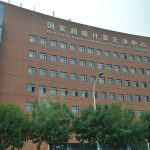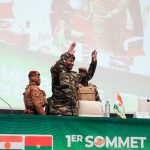The inhabitants of the Uzbek autonomous region protest against the reform of the Constitution. The government withdraws the amendment that nullified the right of the Karakalpaks to secede. Little news comes from the place of the clashes. The crisis threatens the stability of Uzbekistan.
Moscow () – The President of Uzbekistan, Shavkat Mirziyoyev, declared that after the protests in Karakalpakistan, victims were reported among the demonstrators and the security forces. At the moment, the official balance records 18 dead and 243 wounded. The demonstrations began at the end of June, after the presentation of the draft constitutional reforms. The government proposed to remove the term “sovereign” from the description of the status of the Republic of Karakalpakistan, and to remove the right of its citizens to speak out to separate from Uzbekistan.
On July 1, thousands of people took to the streets of Nukus, the capital of Karakalpakistan, and other cities in the autonomous region. Mirziyoyev flew to Nukus twice in three days, declaring a state of emergency. Special units of the National Guard went to the scene and the authorities imposed restrictions on the mobile phone network and the Internet.
Accurate information about events is difficult to obtain: the official Uzbek media does not report news, and access to social media is problematic. According to Ulusmedia.kzthe police and the National Guard opened fire on the demonstrators, and also used flash grenades and tear gas. arbat.media posted some amateur videos showing the arrests on the streets of Nukus. Images of people with bloodied bodies and bloody streets are also circulating, but it is impossible to verify the credibility of these testimonies.
After the start of the unrest, the Uzbek president proposed to keep the point on the sovereignty of Karakalpakstan in the new Constitution. The Uzbek Interior Minister declared the demonstrations illegal, adding that “they arose from a misinterpretation of constitutional reforms.”
In his speech on July 2 at the Žogarky Keneš, the Uzbek Parliament, Mirziyoyev tried to reassure the deputies: “You took the initiative and signed the amendments, the articles in question will not be changed if the people of Karakalpakistan are not satisfied “. He also added that “uniting the destinies of the two states will bring prosperity to the entire population,” referring to the solution of the drought problems in the Aral Sea and other development projects. The president closed his speech with a resounding phrase: “I am proud to be a son not only of Uzbekistan, but also of Karakalpakistan.”
The Republic of Karakalpakistan is the largest region in Uzbekistan, accounting for 40% of the national territory. However, it is the least populated area: only two million inhabitants live there, compared to a total population of almost 35 million nationwide. In Karakalpakistan two official languages are recognized, Karakalpak and Uzbek. The autonomous region had been created in the early years of the Soviet Union – initially as part of Russia and then of Kazakhstan – and in 1936 it was annexed to the Soviet Republic of Uzbekistan, within the framework of the nationality control policies imposed by Stalin.
In 1990, the council of the autonomous region had approved the state declaration, which was also confirmed by Moscow. However, in 1993 an interstate agreement was signed with Uzbekistan for a period of 20 years, in which the right to leave the Uzbek State was guaranteed, a right confirmed in the Constitution in its article 70, despite the six constitutional amendments made since 1993. The agreement was to be discussed again in 2012, but there were persecutions and repressions ordered by the historic president Islam Karimov, who remained in power from 1991 until his death in 2016. Karimov feared that Islamic fundamentalist drifts like the ones that had provoked attacks and massacres in previous years.
Karakalpakistan lives thanks to subsidies from Tashkent, and is strongly affected by ecological problems and the distribution of water resources, largely absorbed by neighboring Turkmenistan, and partly scattered over the uninhabited steppes. Attempts to limit the pro-independence drives of the Karakalpaks also appear to be conditioned by the recent Gornyj Badakšan uprisings in Tajikistan and the Donbass’s situation in the war in Ukraine, all local aspects of the never-ending question of post-Soviet nationalities.











Add Comment